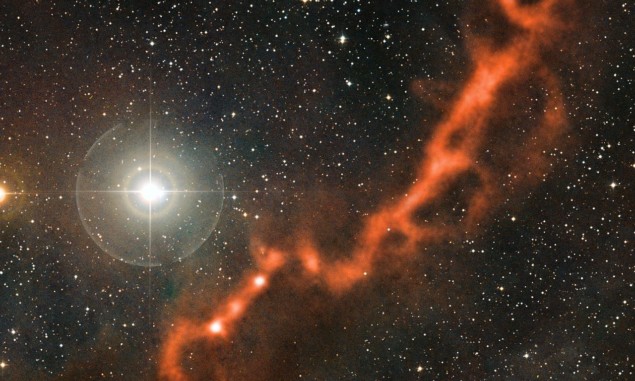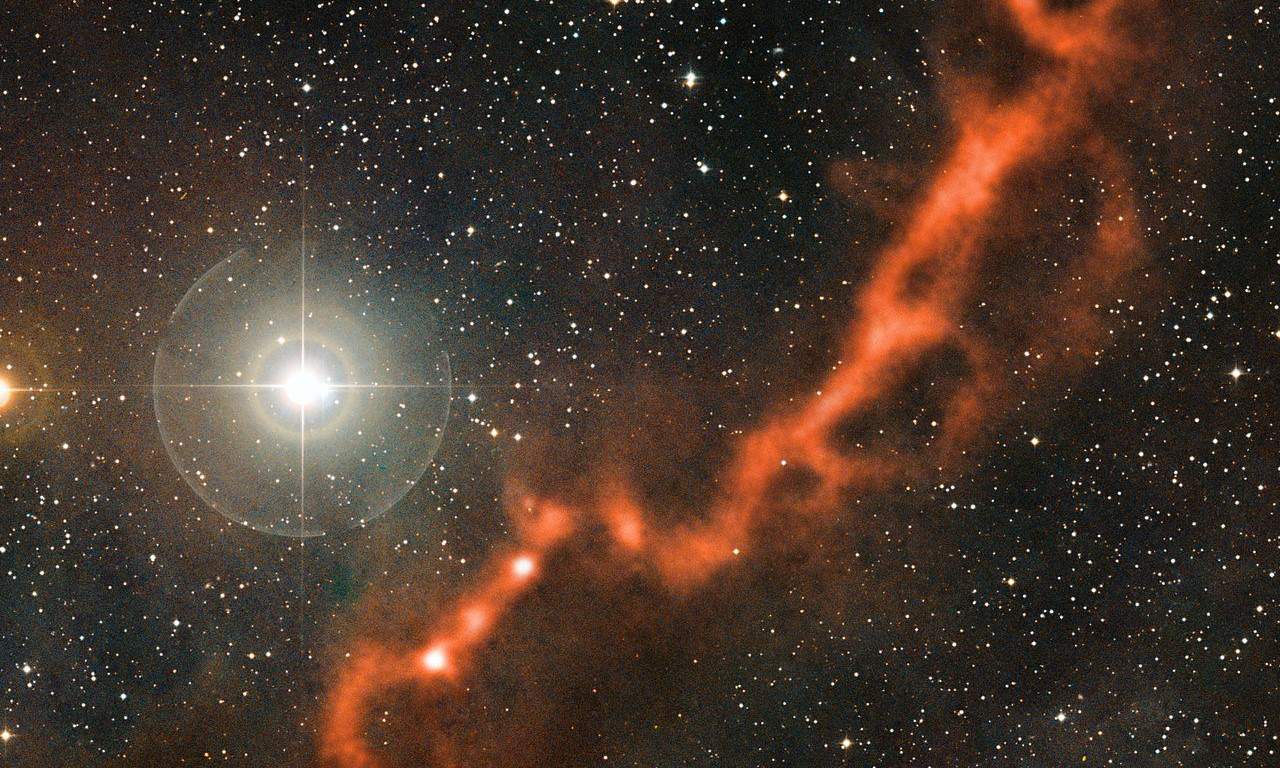
The highest-resolution 3D map of nearby molecular gas clouds in Milky Way has revealed a structure that is creating new regions of star formation.
Called the Perseus-Taurus Shell, or Per-Tau Shell for short, the region is a “superbubble” in the interstellar medium, blown by the blast waves of multiple supernovae dating back 22 million years. The blast waves have ploughed into interstellar gas, piling it up at the edge of the superbubble where it has formed the well-known Perseus and Taurus molecular clouds, which today are active star-forming regions.
The discovery has been made by a team led by Catherine Zucker and Shmuel Bialy of the Harvard Smithsonian Center for Astrophysics. They used a 3D map of interstellar dust with unprecedented resolution down to 1 parsec (3.26 light–years). This was produced by team member Reimar Leike of the Max Planck Institute for Astrophysics using data from the European Space Agency’s Gaia astrometric mission. The map charts molecular clouds out to a distance of 400 parsecs (1300 light–years) from the Sun.
Their new 3D map shows the general structure of giant molecular clouds, with lower-density outer envelopes and higher-density inner layers. The team hypothesizes that the boundary between these two regions within a cloud represents the transition between atomic neutral gas in the outer envelope, and the cold molecular gas required to form stars in the inner zone.
The Radcliffe Wave
While the map charts a dozen molecular clouds in the Sun’s neighbourhood, it is the Per-Tau Shell that has proven the most intriguing. It has an almost spherical structure that is 508 light–years in diameter. The Taurus Molecular Cloud located on the side of the shell that is nearest to the Sun (400 light–years away) and the Perseus Molecular Cloud is on the far side of the shell. The Per-Tau Shell is part of an even bigger structure, discovered in 2020 by a team led by Zucker and João Alves of the University of Vienna and the Radcliffe Institute for Advanced Study at Harvard University. This large structure is called the “Radcliffe Wave”.
Spanning 8800 light–years, from the Taurus Molecular Cloud all the way to the Cygnus X star-forming region located 5000 light–years from us, the Radcliffe Wave contains about three million solar masses worth of gas and dust. It is so large that it is undulating in time with the sinusoidal perturbations of the Milky Way’s spiral disc, an effect that could be caused by interactions with dwarf galaxy satellites or large clumps of dark matter.
The Radcliffe Wave “is a dense feature of the Local Arm of the Milky Way,” says Zucker, and its discovery has overturned the prevailing theory that the high density of star-forming nebulae that we see in the night sky were part of a ring-like structure called the Gould Belt.
Low-resolution illusion
The new results “lend further credence to the idea that the Gould Belt is an illusion caused by previously low-resolution data,” Zucker tells Physics World.
Instead, astronomers can now see that many of the local molecular clouds are part of the Radcliffe Wave, and the supernovae that gave birth to the Per-Tau Shell would originally have formed in an older star-forming nebula within the Radcliffe Wave.
“We think it’s no coincidence that the Per-Tau Shell formed inside the Radcliffe Wave,” says Zucker. “It speaks to the idea that star formation is mediated by physical processes that occur on vastly different scales.”
Supernovae triggers
The idea that supernovae can trigger the formation of molecular clouds had been hypothesized previously, but this is the first time that the process has been seen occurring in 3D. As such, this 3D map of the local molecular gas clouds will allow scientists to compare clouds generated in computer simulations to the real thing. Such comparisons will tell us how molecular clouds form and also provide insights into how stars themselves form, and why some molecular clouds are more adept at forming more massive stars than others.

Evidence for recent star formation seen at Milky Way’s centre
“Understanding the density structure of molecular clouds in 3D will help us to place constraints on the large-scale dynamical processes of the gas within clouds that will form the seeds of star formation,” says Harvard’s Michael Foley, who is on Zucker and Biely’s team. Making comparisons between the results from this 3D map and simulations or theoretical predictions could allow astronomers to see how certain structures within star-forming nebulae, such as clumps and filaments, form, and how these feed into the process of star formation.
The findings are published in The Astrophysical Journal and The Astrophysical Journal Letters.
